
Once again our list of best buys is focused on the cars you are actually buying or seemingly want to buy, if the word from the forecourts is correct.
Over the next three weeks we will give you our choice of the top electric cars, hybrid and plug-in hybrids, SUVs and crossovers on the market for 2023.
We’ll even name our overall best buy for 2023. We hope it helps – but doubt you’ll agree on all our choices.
First up is our list of the best electric cars.
From Baby Reindeer and The Traitors to Bodkin and The 2 Johnnies Late Night Lock In: The best and worst television of 2024
100 Years of Solitude review: A woozy, feverish watch to be savoured in bite-sized portions
How your mini travel shampoo is costing your pocket and the planet - here’s an alternative
Best small electric car: Renault Zoe
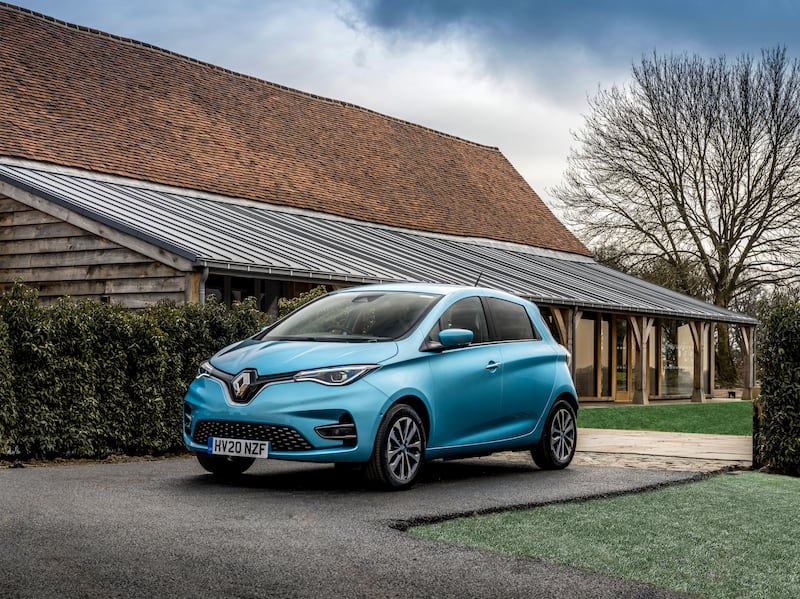
The Zoe is not much longer for this world – it will be replaced in 2024 by a car we’re already childishly excited about, the retro-styled new Renault 5 EV. Until then this is still the best small-EV choice, albeit not the cheapest. The Zoe’s price has crept above €30,000, but it makes up for that with an impressive 395km one-charge range, a spacious cabin and a reasonable driving experience. (The ride’s a bit firm, but that’s about the only major issue.) The 22kW AC charging is brilliant, giving you quick charges from kerbside charging points. Get it in the optional Aconite metallic purple paint for the best effect. Read our original review here.
Also try: Peugeot e-208
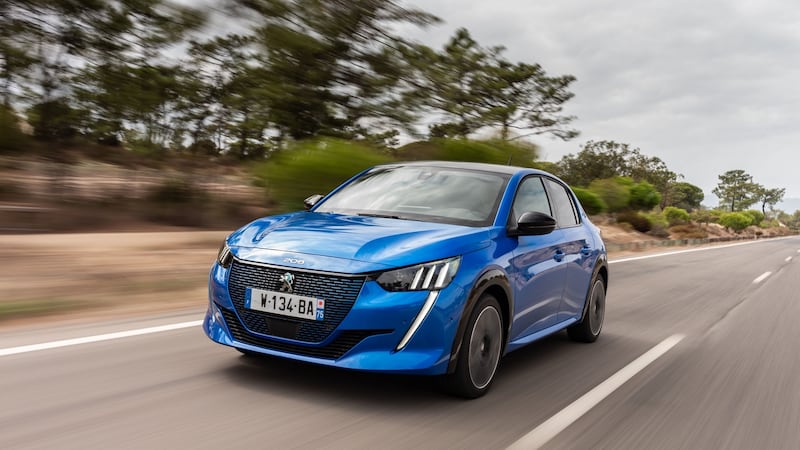
The e-208 looks great and is really good to drive. It lacks the instant, lowdown thump of some electric cars, but it has sharp steering, good body control, and a sense of agility in spite of weighing significantly more than the basic petrol model. Longer-range 400km model on the way. Read our original review here.
Wait for: Fiat Panda
Fiat has been promising us an all-electric reinvention of the utilitarian Panda for some time, but it’s definitely happening now with styling taken from the funky Centoventi concept car. You’ll have to wait till 2024, but with a potential 400km range and a spacious cabin, it could be worth the wait.
Best small electric crossover: Kia Niro EV
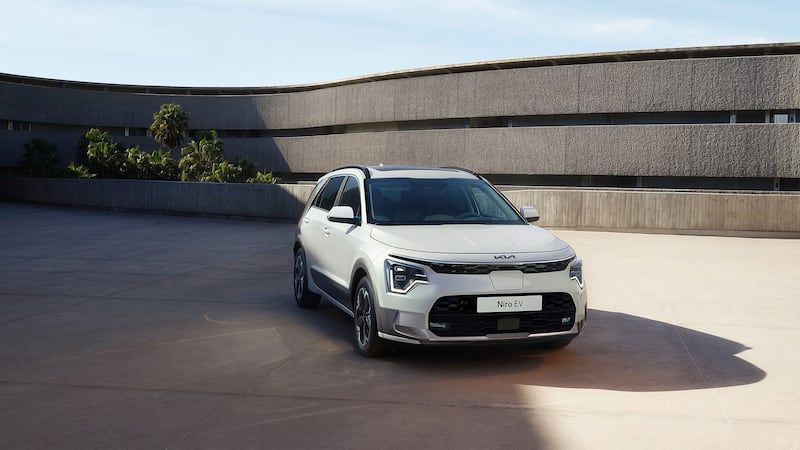
Once upon a time, the Kia Niro EV was a hugely practical electric car that lacked almost utterly for style, inside and out. Well, it’s all-change now, as the new Niro EV continues Kia’s ascent to the top of the electric car pyramid, with exterior and interior style to beat the best of them. The exterior is chunky and slightly squared-off, with dramatic swooping brake lights, while the cabin owes a very clear debt to the brilliant EV6 electric car. Kia claims a one-charge range of 460km, and that’s actually a realistic target in mixed driving. This is also the version of the Niro with the most practical boot, boasting more than 100-litres extra over the plug-in hybrid Niro, and it even gets an extra 22-litre “frunk” in the nose. Not the most exciting car to drive, but it’s refined and easy-going and that’s mostly what you want when driving an EV. Read our original review here.
Also try: Opel Mokka-e
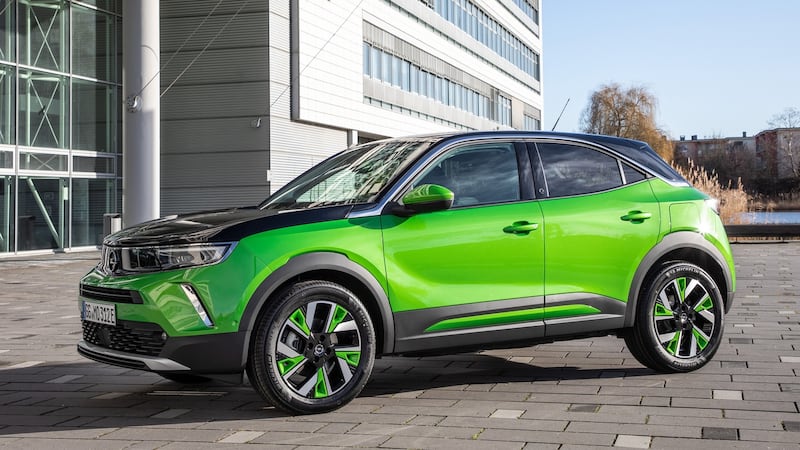
Opel’s take on the same recipe that created the Peugeot e-2008 is sharply styled, aside from that odd rear pillar line, and it’s a far more enticing proposition than the old, moribund Mokka. It’s also quite sharp to drive, with accurate steering and good chassis balance. The cabin’s a bit plain, but you can’t have everything. Current 50kWh battery means a slightly truncated 324km range, but a revised 400km range model is in the offing. Read our original review here.
Wait for: Ford Puma EV
The electric version of the popular Puma will kick off a major EV assault by Ford, as the Blue Oval wants to launch seven new all-electric models by the end of 2024. There are scant technical details available for the EV Puma as of yet, but it’s expected to have a range of about 400km, and there are rumours of a major interior upgrade to help it justify a loftier price tag. If it’s as much fun to drive as the standard Puma, it’ll be a gem.
Best electric family car: MG 4
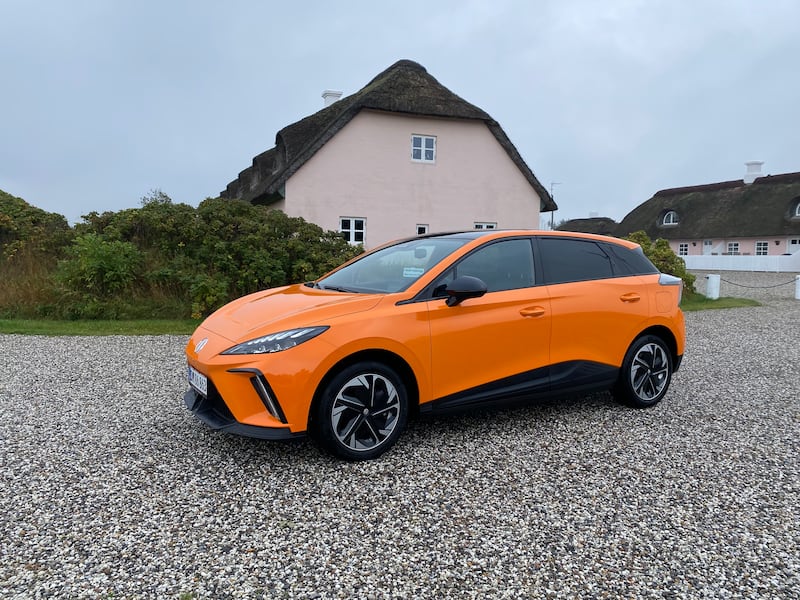
Chinese-owned MG has been bubbling under for some time now, producing workmanlike electric and hybrid models which have been high on value, but a little low on style. The MG 4 kicks all of that process into a much, much higher gear. It’s a high-roof hatchback, like a VW ID.3. It comes with a choice of small or big batteries, offering you ranges of between 310km and 450km, like a VW ID.3. It’s roomy, like a VW ID.3. It also has a starting price of €27,495, like a ... no, wait, hang on. The cheapest VW ID.3 is currently listed at a whopping €40,862 (although the ID.3′s line-up has been trimmed to this single model thanks to the chip shortages) so the MG has an astonishing price advantage. The downsides? Very few. The cabin is a little cheap in places, and the infotainment system is very fiddly but then that’s true of the VW too. The MG 4 is even quite lively and fun to drive, as an MG ought to be. Remember when someone once said Chinese cars were going to take over? Well, it’s happening ... Read our original review here.
Also try: Cupra Born
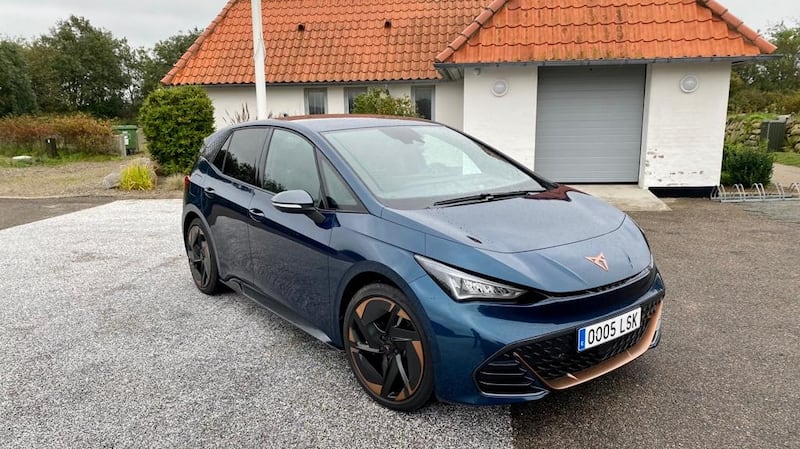
The Born is the first all-electric model from Seat’s spin-off sporty brand, Cupra. Actually, scratch that – given that Cupra is fast becoming a bigger focus for the VW Group than Seat is, we can probably stop calling it a spin-off any more. Underneath, it’s mechanically identical to a VW ID.3, but it’s sharper to look at on the outside, and has a nicer interior too. It’s entirely the same to drive, in spite of Cupra’s sporty protestations, however it’s also fractionally more affordable than the Vee-Dub, so that’s in its favour. Read our original review here.
Wait for: Ora Funky Cat
Odd name, and oddball looks – like a cross between a 2002 Nissan Micra and a 1955 Porsche 356 – but with premium-car quality and a very sharp entry price of €31,995. Small and big battery versions available and you can get it with a maximum range of 420km. An interesting, left-field choice (the cars are actually made by China’s Great Wall Motors) but the dealer network is more imminent than extant, so actually getting hold of one could be tricky.
Best electric executive car: BMW i4
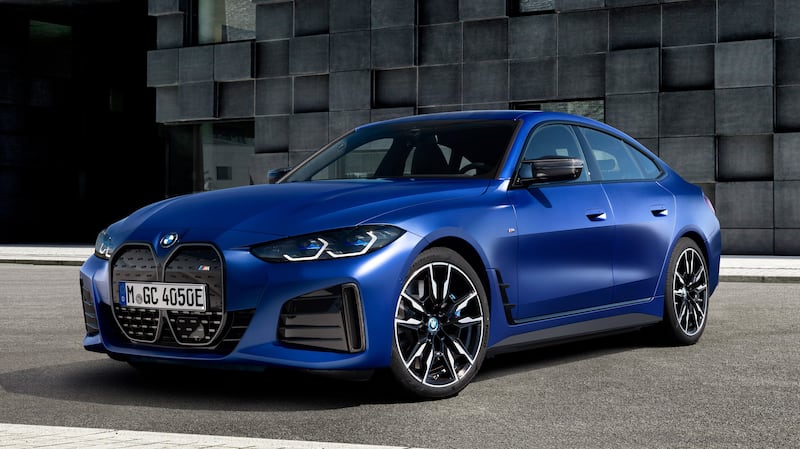
The BMW i4 is a little hamstrung by sharing a platform with the petrol-powered likes of the 3 Series and 4 Series, but it still makes for one of the most impressive electric cars around. The standard i4 eDrive40 is the one to go for. You get rear-wheel drive, 340hp, and a potential range of up to 590km. Well, sort of – this is where the compromise kicks in as the real, usable range is more like 450km, but that’s still pretty decent. Better still is the grunty performance (430Nm of torque doesn’t sound all that much but it does a good job of shifting the i4 along nicely) and the agile handling.
The i4 is a heavy car – 2.1-tonnes at the kerb – but its steering and chassis balance make it feel like a featherweight when you aim it at a corner. Space in the back is a little tight, but the boot is practical, and the all-glass cockpit is stylish, if a little fiddly to use at times. High-performance twin-motor i4 M50 model has an unfortunate name, in an Irish context, but is blisteringly quick. Oddly, it’s not as much fun to drive as the basic i4, and the extra power and four-wheel drive compromises the range. Read our original review here.
Also try: Polestar 2
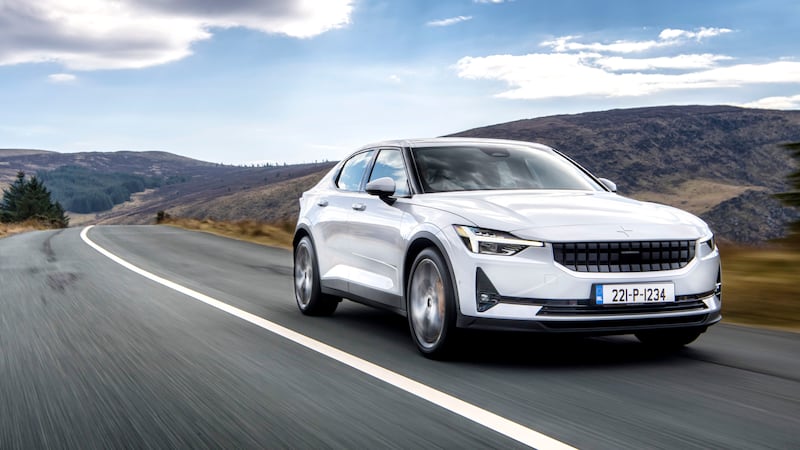
Spun off from Volvo as a high-performance and all-electric brand, Polestar is still finding its feet. Arguably, we won’t see the true Polestar brand until the all-new Polestar 3 SUV arrives next year, complete with its €100,000 price tag. In the meantime, the 2 is a slight mishmash, mixing Volvo platform and styling with modern EV tech and a slight sense of elegant Scandi style. The 2 is fun to drive, especially the raucous 400hp Performance model, but it’s not efficient enough on longer journeys, and the ride quality is very harsh. Still; an interesting choice. Read our original review here.
Wait for: Hyundai Ioniq 6
Hyundai has really hit it big with the massive, and massively impressive, Ioniq 5 electric car, which is either a crossover or a “big hatch” depending on how you look at it. The upcoming Ioniq 6 is much less androgynous, taking the same electric platform as the 5 and adding a low, sleek, streamlined body that looks almost Art Deco from some angles. Expect a 600km+ range and a gorgeous cabin when it arrives later in 2023.
Best electric crossover: Hyundai Ioniq 5
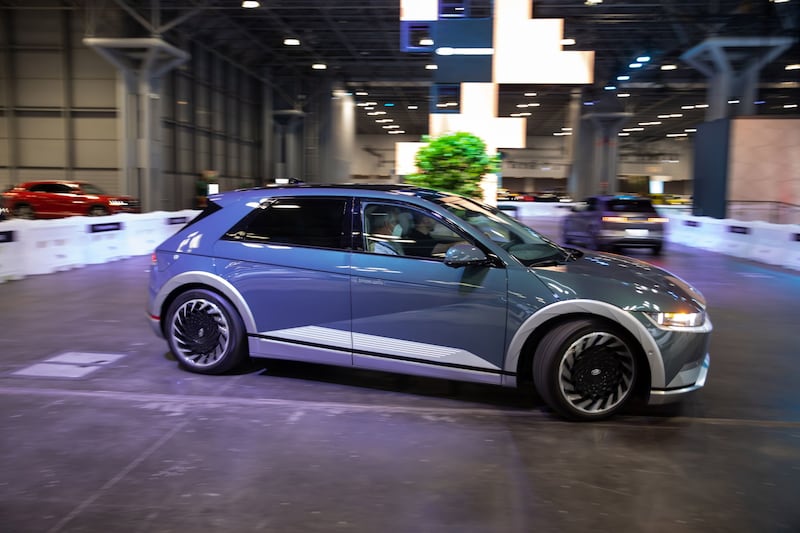
Speaking of Hyundai’s Ioniq 5, here’s the Ioniq 5 taking our nod as the best electric crossover. That’s despite the fact that its crossover-ness is in dispute – after all, while it is quite tall and bulky, the styling is essentially a modern-day tribute to the original Pony hatchback that started the Hyundai car-making story. So, really, it’s a big hatch, not a crossover at all. Either way, it doesn’t really matter – this is a striking car to look at, inside and out.
The exterior styling hasn’t aged a day since it was launched, and inside the minimalist twin-screen layout mixes with acres of space to create a truly relaxing environment. You can spend big to get a large 77kWh battery and a long range of more than 500km. On the other hand, you can save a bundle, spend €39,995 (correct at time of going to press ...) and get the 58kWh version which can still do an impressive 385km, and which isn’t much more expensive than the significantly smaller Renault Megane E-Tech. The Ioniq 5, in spite of its bulk, is also really good to drive with sharp responses. The only let-down is the active lane-keeping steering system, which is needlessly intrusive, but you can switch that off. Or, you could buy the mechanically-identical Kia EV6 which is lower slung, slightly less spacious, but seriously good to drive. Watch our original review here.
Also try: Skoda Enyaq
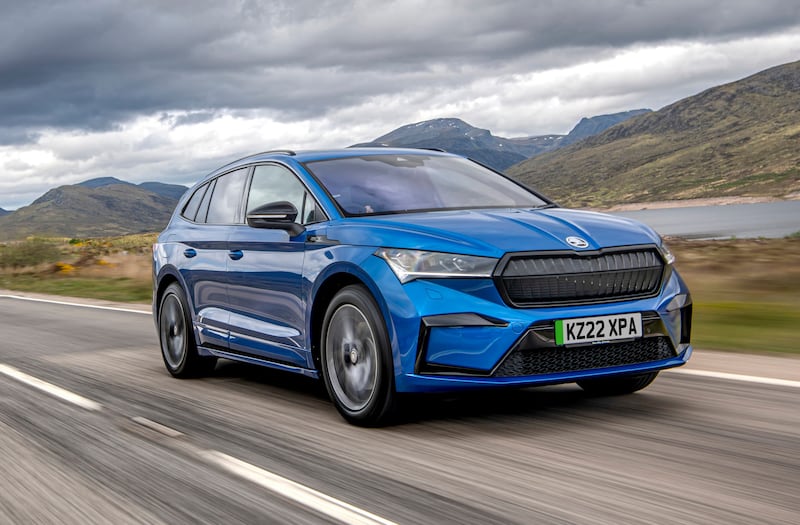
Skoda’s big electric car maximises common sense. You can buy all of the same platform, batteries, motors and so on with VW or Audi badges, but the Skoda costs less than those, and provides identical performance. It’s also, arguably, the best looking of the three-strong electric crossover line-up, and it definitely has the best cabin of the three cars, looking and feeling classier than that of even the Audi. The Skoda Enyaq has the biggest boot. The long-range 77kWh model can do a realistic 500km between charges, the four-wheel drive 80x model and 299hp RS trade range for extra performance, but aren’t that much more fun to drive than the standard model. There’s also the option of a slant-roofed “Coupe” version, which is actually both more stylish and practical than it sounds. Still, better stick with the practical one, eh? Read our original review here.
Wait For: Toyota BZ4X
Toyota’s first proper all-electric model should have been with us by now, but it got delayed by a global recall to fix an issue that made the wheels fall off. That done, you can expect this to be a runaway success – it has the usual Toyota quality, has a 500-odd-km range, and is surprisingly agile and enjoyable to drive.
Best electric SUV: Nissan Ariya
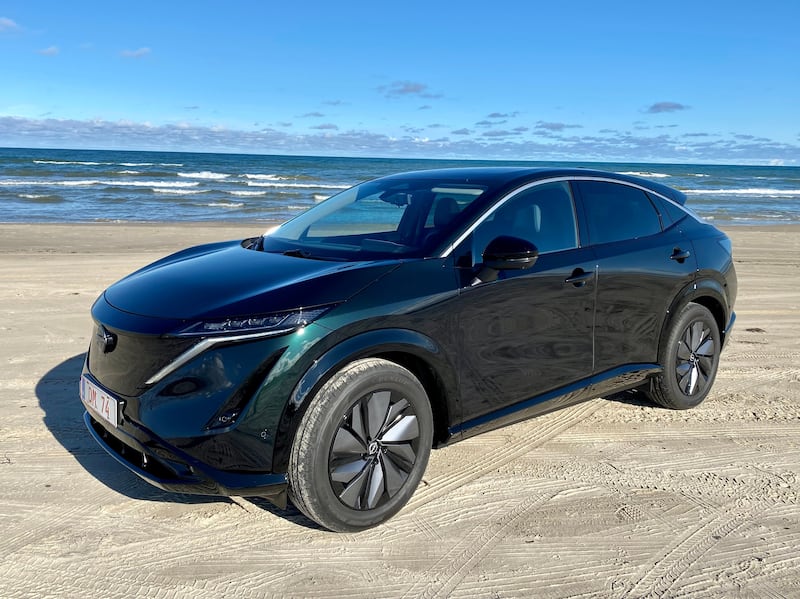
Nissan really kick-started the electric revolution with the original Leaf, but since then – and certainly since the replacement of that original Leaf with the current model – it’s all been a bit quiet on the EV front. The Ariya really should have been with us a couple of years ago; guess why it was delayed and held back? It was worth the wait, though. The Ariya takes some of the styling language of the current Qashqai but sweeps it all backward, smooths it all off, and ends up as one of the most handsome SUVs around. Get it in white, with black trim, and it looks more like an evolution of the Space Shuttle. It’s even better inside, with groovy haptic buttons on soft-touch surfaces, and exceptionally high quality. Not quite sure we needed a motorised glove box, but it’s a neat touch all the same. To drive, the Ariya is right up with the best – sharp steering, enthusiastic responses, and the potential for 532km range if you go for the biggest 87kWh battery option. Read our original review here.
Also try: Tesla Model Y
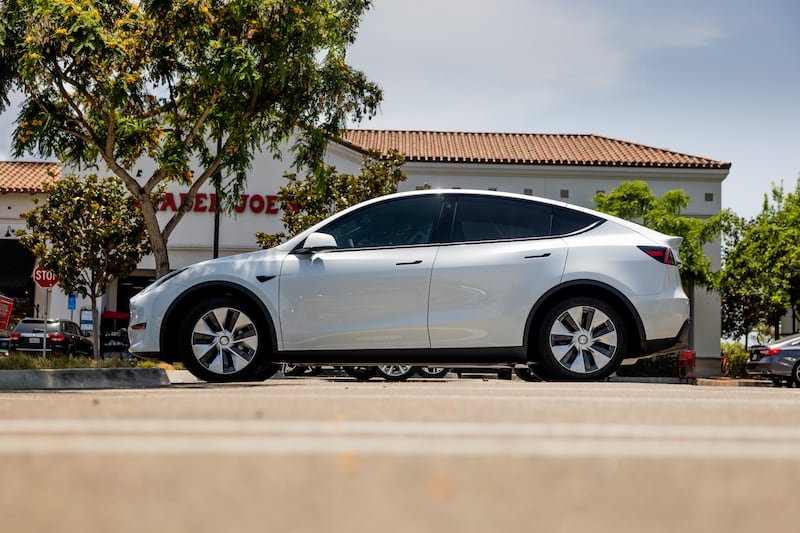
Tesla retains its allure as the most cutting-edge EV car maker, in spite of not having launched an entirely new vehicle in three years (don’t get us started on the Cybertruck). The Model Y – effectively a Model 3 saloon with a taller roof and a hatchback boot – is its best all-rounder, mixing excellent range and performance (even the standard version can squash you into your seat like a sports car) with a roomy cabin. Quality niggles still raise their heads though, and it’s not cheap. Read our original review here.
Wait for: BMW iX1
As electric cars go, the BMW iX1 looks pretty unassuming, styled the same as a regular petrol or diesel model. Underneath, though, it’s really impressive with a solid 440km range, hot-hatch performance from its 64kWh battery, and a classy interior. Read our original review here.
Best electric luxury car: Mercedes-Benz EQE
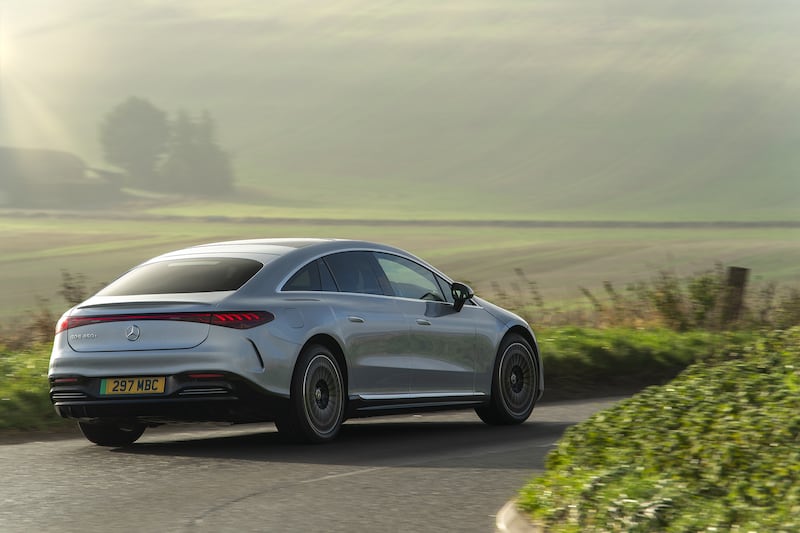
You could put in a pretty good argument that the larger, grander, more grandiose even, EQS should hoist the trophy here. But that’s how good the EQE is – it does everything that the EQS does so well, but does it for significantly less cash, and with considerably more verve from behind the wheel. Where the EQS feels remote and aloof, the EQE can actually be quite entertaining to drive. Both cars share essentially the same cabin, including the option of the massive “HyperScreen” dashboard, but we prefer the simpler two-screen set-up.
Comfort and refinement are absolutely top drawer. If the EQE loses out to the EQS in terms of ride comfort, then that gap can be bridged by specking your EQE with air suspension. Either way, the EQE is more relaxing to drive because its regenerative braking feels so much more natural. There’s good space in the cabin (albeit it gets a touch intimate in the back) but the boot is slightly too small – a shame that there’s no plan for an EQE estate. It's the range that truly impresses, though. Mercedes’ claim is that the EQE can go for 640km on one charge, and that’s actually, incredibly, realistic. Even with 90 per cent motorway miles, we managed to get an EQE test car to deliver 500km on one charge. Range anxiety? What’s that? Read our original review here.
Also try: Audi e-tron GT
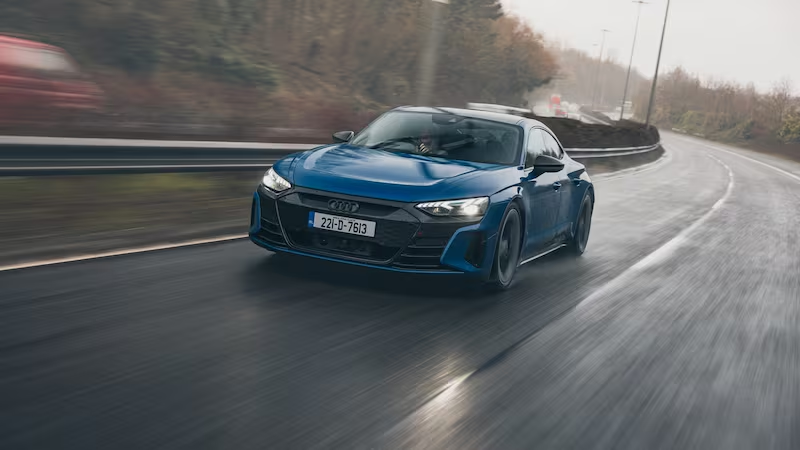
If the EQE and EQS represent the luxurious, comfortable, spacious end of the EV spectrum, then the e-Tron GT is right down the other end, where the sporty stuff lives. It’s almost tight enough inside to count as cramped, but you won’t care as the way this thing drives is mind-boggling. Spec the mighty RS version and the blood will drain from your feet every time you hit the go pedal. It’s not all about straight-lines, either. The e-tron GT feels light and agile in corners too, even though it’s a two-tonne-plus car. Quality is off-the scale good, and the only fly in the ointment is that the mechanically identical Porsche Taycan can technically be bought for less, although at that price the Porsche is a rear-wheel drive only model. The Audi is only ever a four-wheel drive quattro. Read our original review here.
Wait for: Audi A6 e-tron
As with the EQE, you could take issue with the next-gen A6′s inclusion here as it’s more executive car than it is luxury car. That, however, is to split hairs. If the production version is anything like the concept car, then the difference between luxury and executive will be entirely semantic. Besides, isn’t a 700km range the greatest luxury of all?









